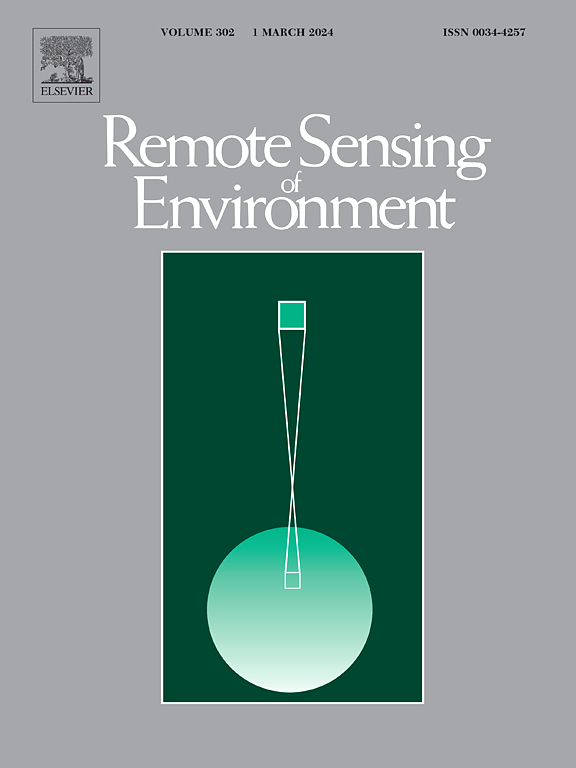Development of a hybrid algorithm for the simultaneous retrieval of aerosol optical thickness and fine-mode fraction from multispectral satellite observation combining radiative transfer and transfer learning approaches
IF 11.1
1区 地球科学
Q1 ENVIRONMENTAL SCIENCES
引用次数: 0
Abstract
The aerosol optical thickness (AOT) and fine-mode fraction (FMF) are crucial to understanding the radiative and environmental effects of aerosols. However, accurately retrieving these properties simultaneously from monodirectional multispectral satellite data remains challenging. Inversion algorithms based on lookup tables typically leverage information from only two or three channels, resulting in limited retrieval parameters. Although optimal estimation methods can enhance the utilization of multispectral information, they are mostly constrained by fixed aerosol types and have higher computational overhead due to the multiple iterations. To achieve real-time, high-precision, and simultaneous retrieval of the AOT and FMF for geostationary satellites with high-frequency observation, we propose a novel hybrid algorithm, AIRTrans, for the Himawari-8/AHI by integrating radiative transfer (RT) and transfer learning (TL) approaches. Specifically, RT is used to construct a simulation dataset that covers multiple aerosol types and surface conditions corresponding to the simulated multispectral observation, which pre-trains an artificial neural network model. The TL strategy is then employed to fine-tune this model using in situ data, enhancing its representativeness in real scenarios. AIRTrans performs direct retrieval using satellite observations and surface reflectance constructed via the second minimum reflectance method but considering background AOT. Results indicate that the AIRTrans-retrieved AOT and FMF are generally more consistent with ground-based observations from AERONET than official AHI products, through three years of independent validation across the full-disk region. Specifically, AIRTrans achieves retrieval with RMSEs of 0.132 and 0.146 for AOT and FMF, respectively, compared to 0.216 and 0.284 for AHI products. AIRTrans shows a remarkable improvement on FMF, particularly in addressing the significant underestimation of the AHI products at over 90 % of individual sites. The performance of AIRTrans during two severe aerosol pollution events (intense dust storms and haze) further demonstrates its robust ability to capture spatiotemporal variations of AOT and FMF simultaneously.
求助全文
约1分钟内获得全文
求助全文
来源期刊

Remote Sensing of Environment
环境科学-成像科学与照相技术
CiteScore
25.10
自引率
8.90%
发文量
455
审稿时长
53 days
期刊介绍:
Remote Sensing of Environment (RSE) serves the Earth observation community by disseminating results on the theory, science, applications, and technology that contribute to advancing the field of remote sensing. With a thoroughly interdisciplinary approach, RSE encompasses terrestrial, oceanic, and atmospheric sensing.
The journal emphasizes biophysical and quantitative approaches to remote sensing at local to global scales, covering a diverse range of applications and techniques.
RSE serves as a vital platform for the exchange of knowledge and advancements in the dynamic field of remote sensing.
 求助内容:
求助内容: 应助结果提醒方式:
应助结果提醒方式:


